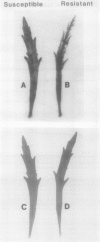Abstract
A biotype of Conyza bonariensis (L.) Cronq. (identical to Conyza linefolia in other publications) originating in Egypt is resistant to the herbicide 1,1′-dimethyl-4,4′-bipyridinium ion (paraquat). Penetration of the cuticle by [14C]paraquat was greater in the resistant biotype than the susceptible (wild) biotype; therefore, resistance was not due to differences in uptake. The resistant and susceptible biotypes were indistinguishable by measuring in vitro photosystem I partial reactions using paraquat, 6,7-dihydrodipyrido [1,2-α:2′,1′-c] pyrazinediium ion (diquat), or 7,8-dihydro-6H-dipyrido [1,2-α:2′,1′-c] [1,4] diazepinediium ion (triquat) as electron acceptors. Therefore, alteration at the electron acceptor level of photosystem I is not the basis for resistance. Chlorophyll fluorescence measured in vivo was quenched in the susceptible biotype by leaf treatment with the bipyridinium herbicides. Resistance to quenching of in vivo chlorophyll fluorescence was observed in the resistant biotype, indicating that the herbicide was excluded from the chloroplasts. Movement of [14C] paraquat was restricted in the resistant biotype when excised leaves were supplied [14C]paraquat through the petiole. We propose that the mechanism of resistance to paraquat is exclusion of paraquat from its site of action in the chloroplast by a rapid sequestration mechanism. No differential binding of paraquat to cell walls isolated from susceptible and resistant biotypes could be detected. The exact site and mechanism of paraquat binding to sequester the herbicide remains to be determined.
Full text
PDF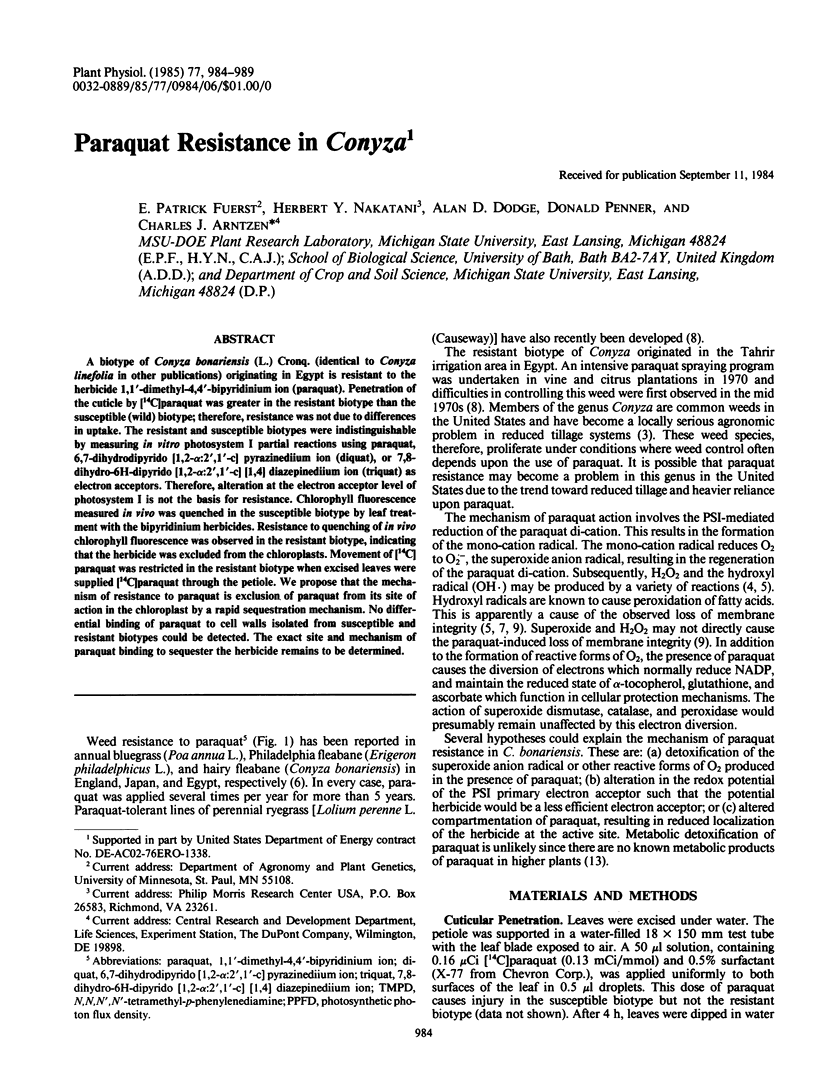
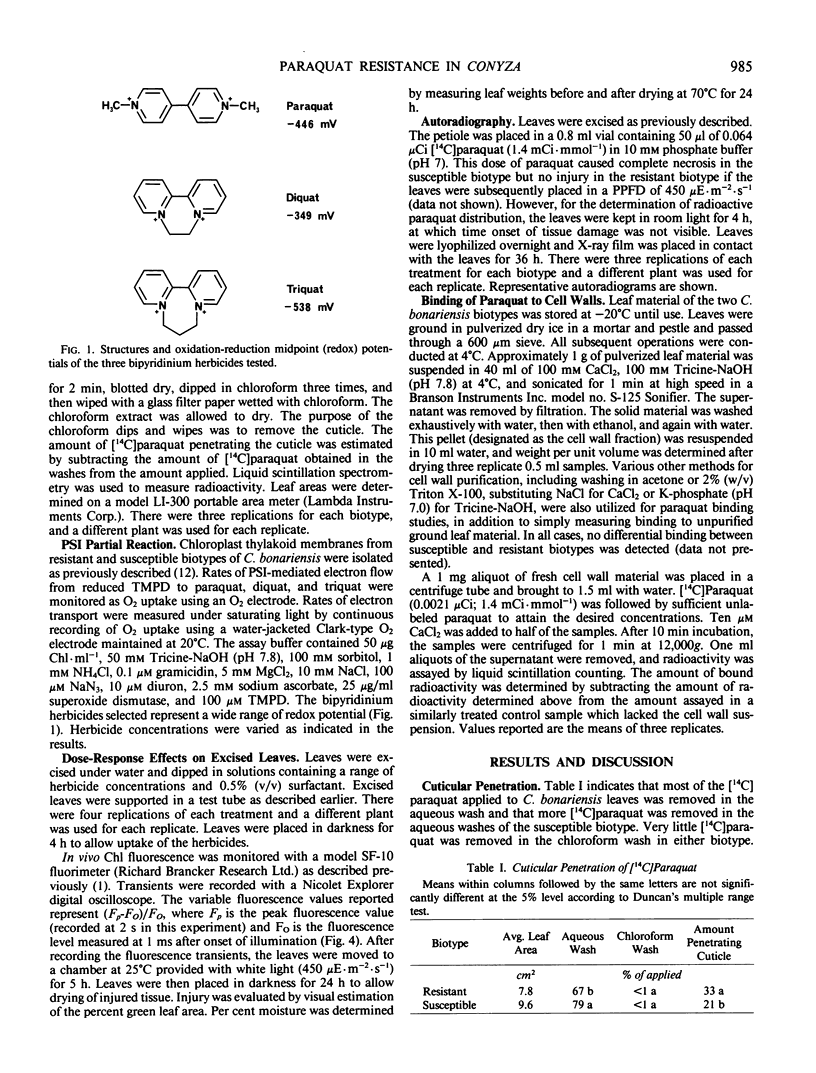
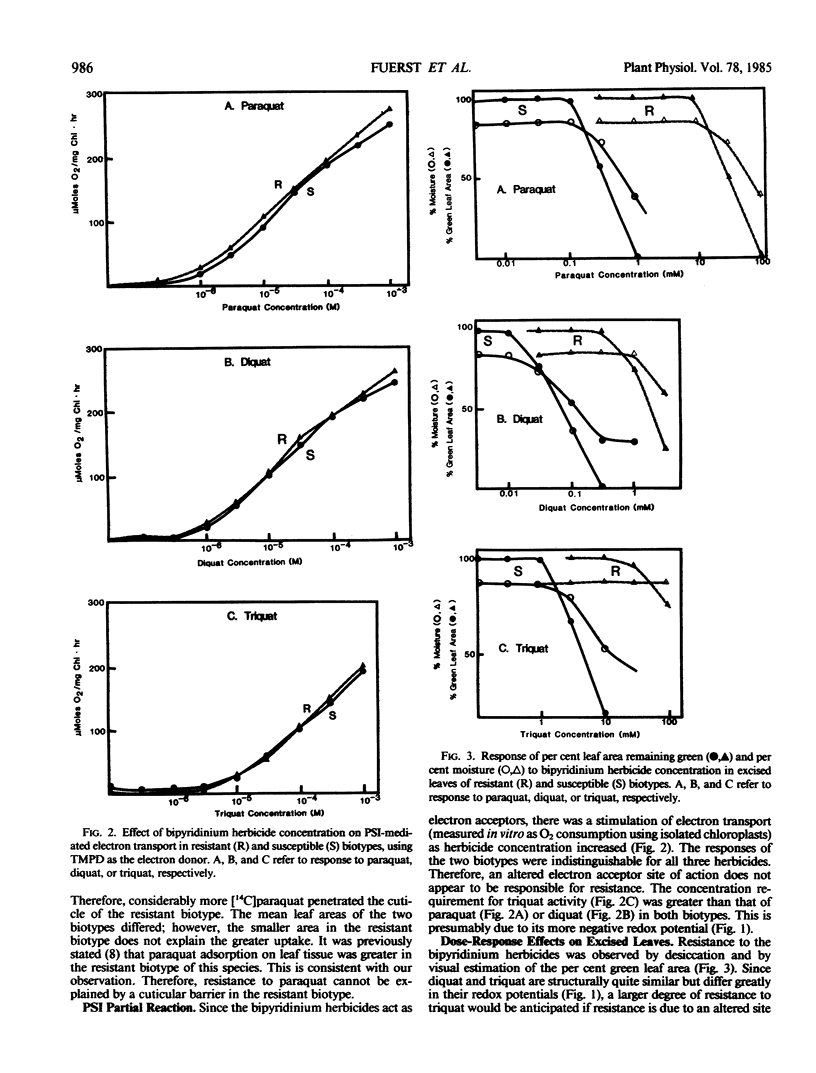
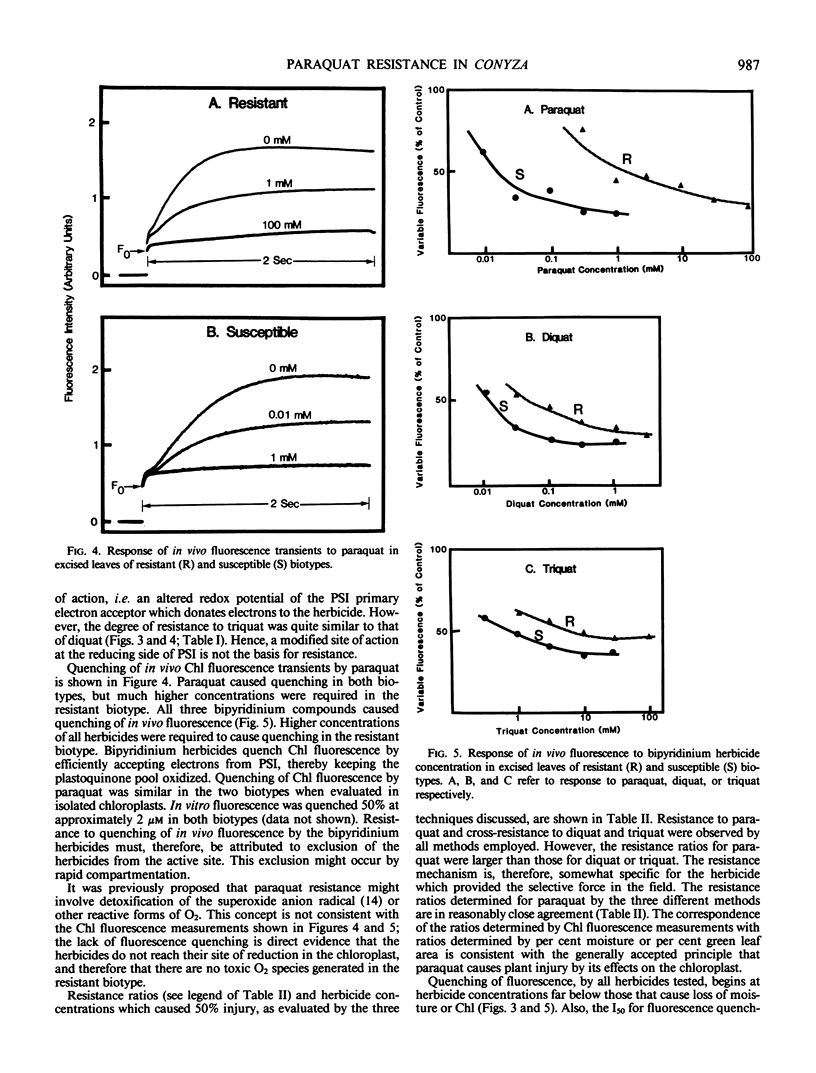
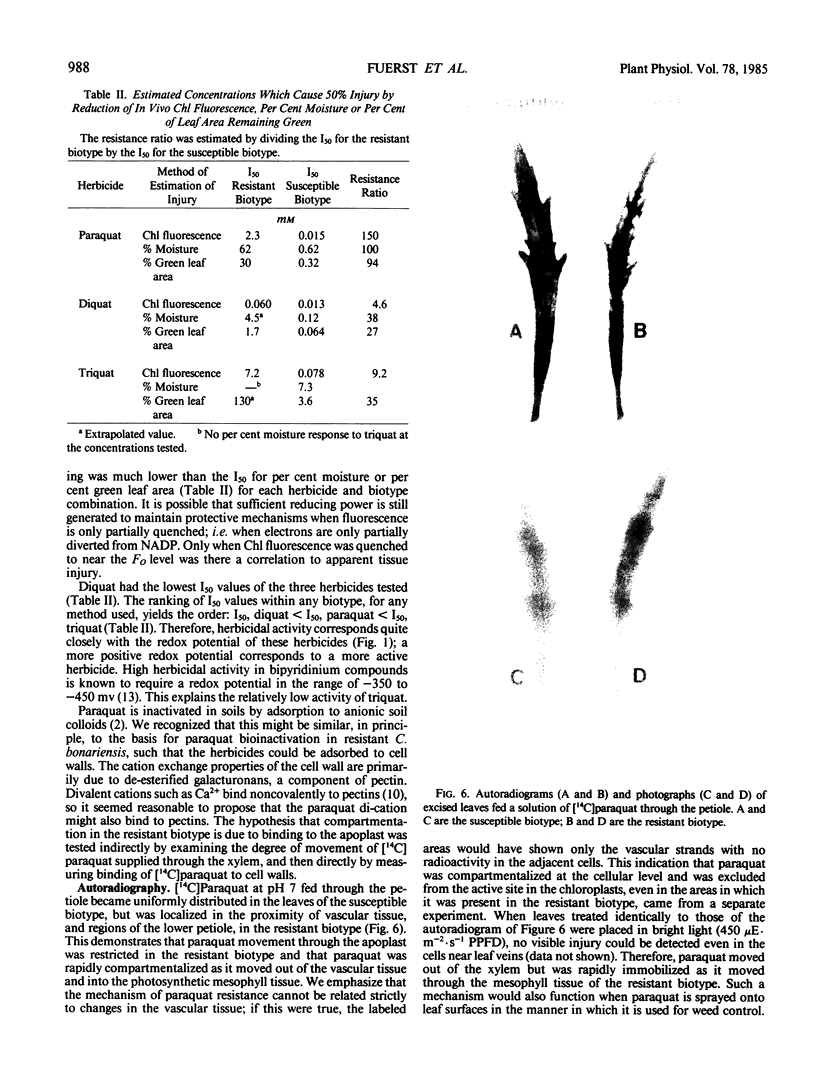
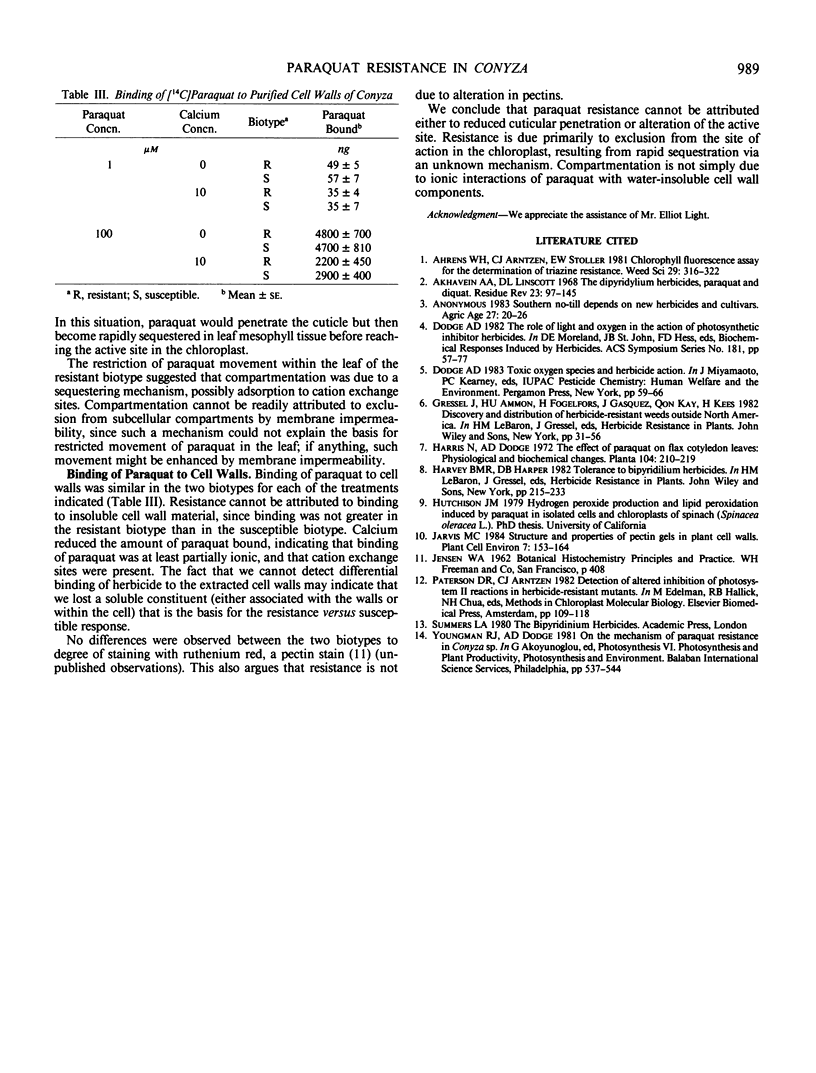
Images in this article
Selected References
These references are in PubMed. This may not be the complete list of references from this article.
- Akhavein A. A., Linscott D. L. The dipyridylium herbicides, paraquat and diquat. Residue Rev. 1968;23:97–145. doi: 10.1007/978-1-4615-8437-7_6. [DOI] [PubMed] [Google Scholar]



